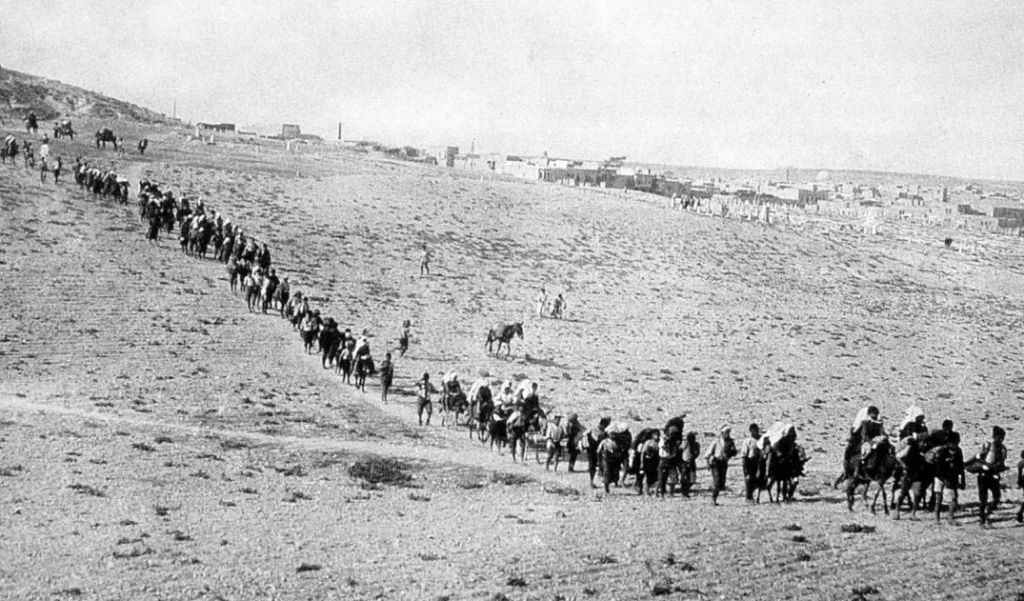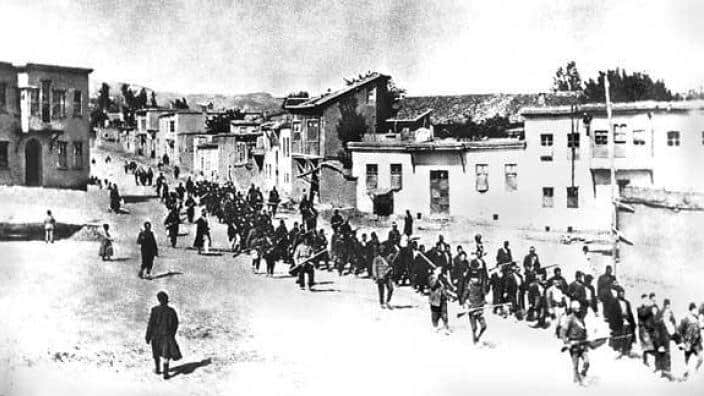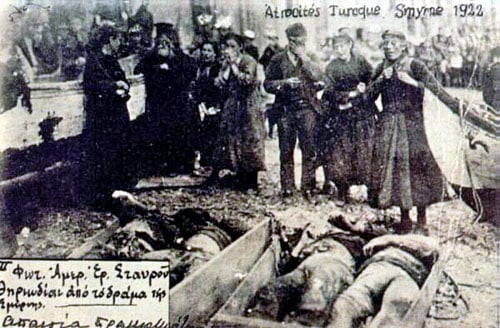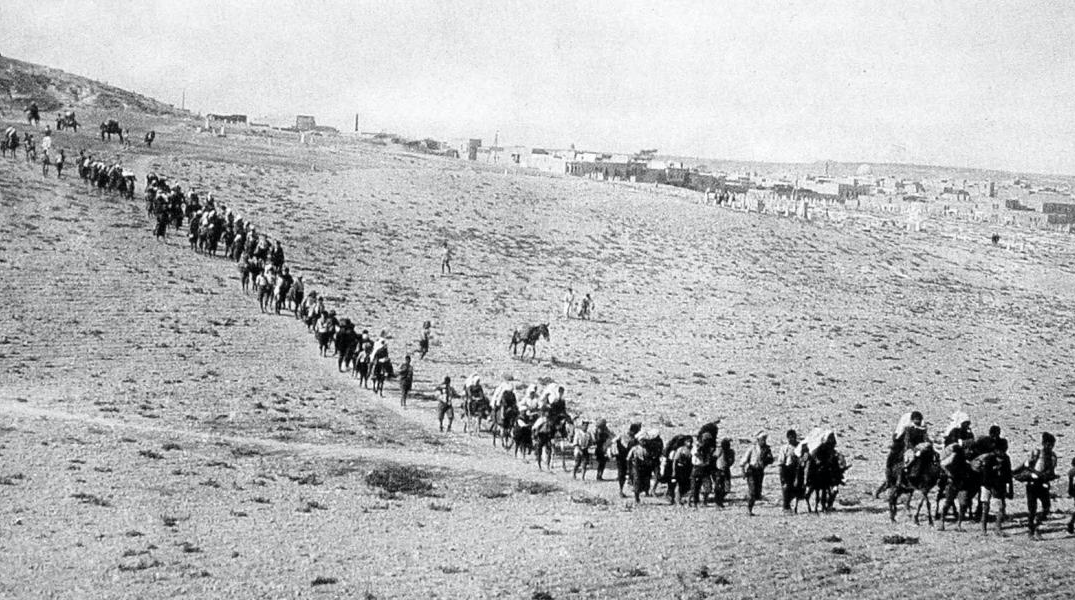
Pontus (Pontos), an ancient Greek word for “sea”, refers to the Black Sea and the surrounding coastal areas.
Greek presence in Asia Minor dates as back as 1500 BC, the late Bronze Age, and among those who walked its soils was the epic poet Homer, author of the two central works of the ancient Greek literature, the Iliad and the Odyssey. The age-old presence of Greeks would be brutally interrupted in the early 20thcentury. The dying Ottoman Empire and its heir apparent to the Young Turks managed to eliminate anything Greek from Asia Minor within only nine years. The fate of other Christian populations was the same, as Armenians and Assyrians were also either exterminated or deported.
The systematic extermination of the Greek population of Pontus is historically divided into three consecutive phases: The first starts with World War I and ends with the occupation of Trebizond by the Russian Army (1914-1916), the second ends with the end of the First World War (1916-1918) and the latter is completed by the implementation of the Pact for the Populations Exchange between Greece and Turkey (1918-1923).
By 1923, out of approximately 700,000 Pontian Greeks who lived in Asia Minor at the beginning of World War I, as many as 353,000 were killed, and almost all the rest had been uprooted during the subsequent forced population exchange between. This was the end of one of the ancient Greek civilizations in Asia Minor.
As a consequence of the deliberate and systematic policy of Turkification of the Ottoman Empire, it is estimated that more than 2.75 million Armenians, Assyrians and Greeks were slaughtered outright or were victims of the "white death" of disease and starvation, a result of the routine process of deportations, slave labor, and death marches.

Phases A and B
In Pontus the wave of mass persecution began with deportations in 1915. The Turkish defeat in the Russian-Turkish War was largely attributed to the Greeks serving in the Ottoman army. As a consequence, all recruited Pontians were compelled to serve in the labor battalions. As a consequence numerous Greeks took refuge in the mountains. As a response in the province of Giresun (Kerasounta) some 88 villages were completely burned within three months. The Greeks of the province, estimated to be about 30,000, were forced to march to Ankara during the heavy Anatolian winter. Inevitably a quarter of them died en route.
“After leaving Samsoun on my return trip to Harpoot I passed the old men of Samsoun, Greeks, who were being deported. Many of these men wee feeble with age, but in spite of that they were being pressed forward at a rate of thirty miles a day and there was no transport available for those who were weak or ill. There was no food allowance for them and any food they could obtain had to be procured by money or sale of small articles that they could carry with them. On this trip I passed many corpses of Greeks lying by the roadside where they had died from exposure. Many of these were the corpses of women and girls with their faces toward the sky, covered with flies”, Stanley K. Hopkins of the Near East Relief described in a report.
Deportations continued unceasingly even when the Russian troops entered Trebizond in early 1916. Under the pretext that the Pontians supported the Russians, a large number of residents from the Sinope and Kerasounta were displaced, while women were forcibly Islamized. The persecutions, which were intensified by the Decree of December 1916 that ordered the exile of all males between the age of 18 and 40 and the transfer of women and children in the depths of Anatolia, led to the creation of resistance groups by the Pontians. The implementation of the measures began from Samsun. In the province of Amasia, 72,375 Greeks, out of a total of 136,768, were displaced, of whom 70% died of hardship.
In Agios Georgios of Kerasounta, 3,000 Greeks in captivity by the Ottoman authorities found slow death due to starvation and other hardships. During World War I a total of 235,000 Pontians were exiled, while 80,000 immigrated to Russia. At the same time, however, the persecutions suffered by the Greeks of the eastern Pontus in the area of Trebizond, were less intensified mainly due to the ability of the Bishop Chrysanthos to interact with the local authorities, but also by the fact that since April 1916 the area was captured by the Russian Army. According to estimates by the Bishop of Trebizond, the number of victims of these policies stood at about 100,000 for that time. The protests by -mainly- Austrian and American diplomats against the Ottoman government were continuous.

Phase C
Following the Russian capitulation and the withdrawal of the Russian Army from the region, the persecutions intensified. The arrival of Kemal Ataturk in the region in May 1919 and the outburst of the movement of the Young Turks, signaled the systematic action of irregular groups against Christian populations.
On May 29, Ataturk commissioned irregular Topal Osman’s gang to carry out massive operations against the local population. In this context, thousands of Greeks were massacred or displaced from Samsun and 394 surrounding villages. Relevant references have been recorded by the Greek Foreign Ministry, as well as by US Ambassador Henry Morgenthau. Between February and August 1920 Bafra was burned, while some 6,000 Greeks who had rushed to find shelter in local churches were exterminated. In total, out of 25,000 Greeks living in Bafra and the surrounding areas, 90% were murdered, while the rest were displaced in Anatolia. In September 1921, priests and personalities of the spirit were arrested and sentenced to death by the so-called “Courts of Independence” in Amasia. At the same time, young girls and boys were forcibly taken from their families and were given to the harems of wealthy Turks.

